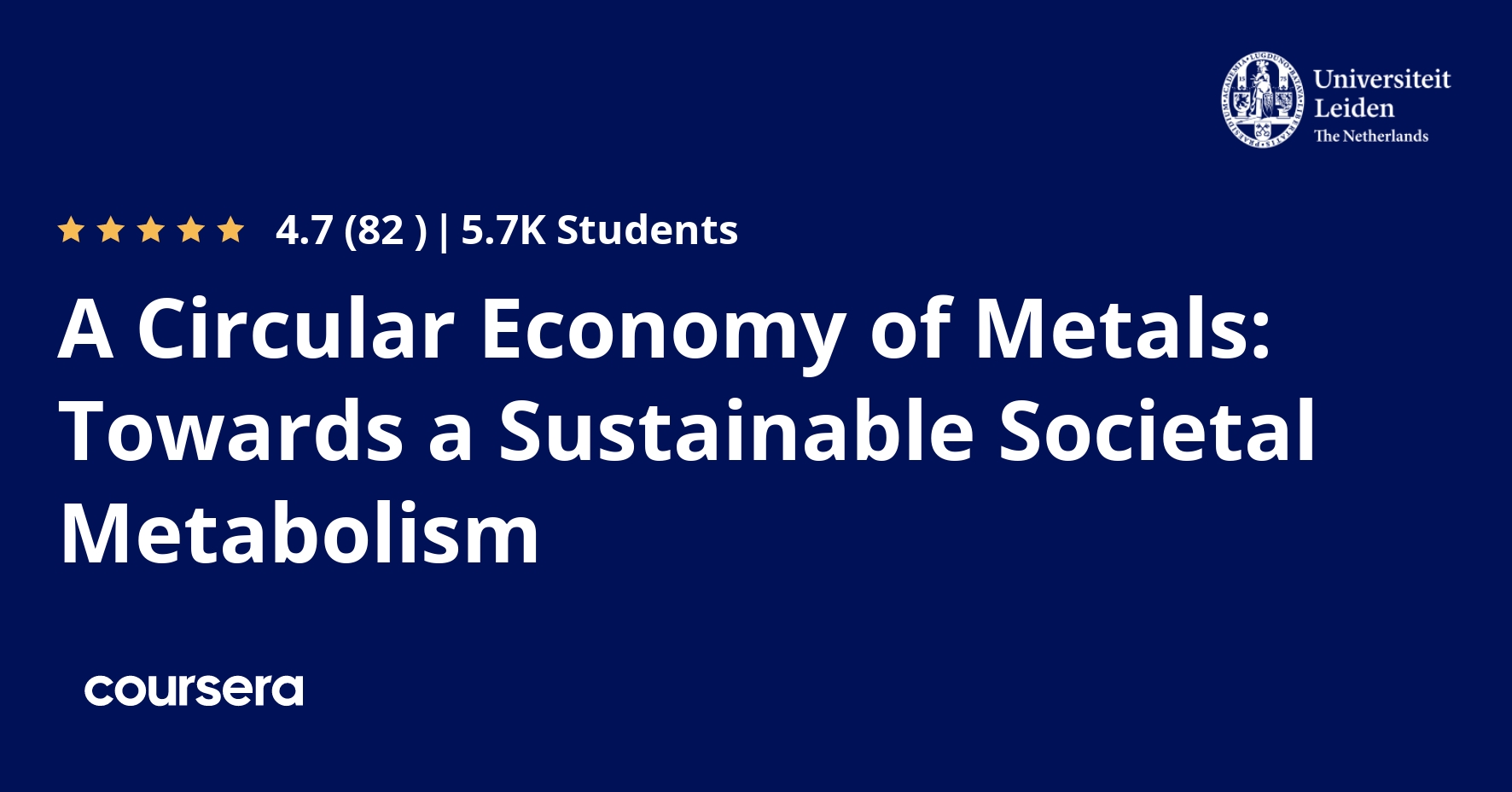Description
Metals are present everywhere around us and are one of the major materials upon which our economies are built. Economic development is deeply coupled with the use of metals. During the 20th century, the variety of metal applications in society grew rapidly. In addition to mass applications such as steel in buildings and aluminium in planes, more and more different metals are in use for innovative technologies such as the use of the speciality metal indium in LCD screens.
A lot of metals will be needed in the future. It will not be easy to provide them. In particular in emerging economies, but also in industrialised countries, the demand for metals is increasing rapidly. Mining and production activities expand, and with that also the environmental consequences of metal production.
In this course, we will explore those consequences and we will also explore options to move towards a more sustainable system of metals production and use. We will focus especially on the options to reach a circular economy for metals: keeping metals in use for a very long time, to avoid having to mine new ones.
This course is based on the reports of the Global Metals Flows Group of the International Resource Panel that is part of UN Environment. An important aspect that will come back each week, are the UN Sustainable Development Goals, the SDGs. Those are ambitious goals to measure our progress towards a more sustainable world. We will use the SDGs as a touching stone for the assessment of the metals challenge, as well as the solutions we present in this course to solve that challenge.
What you will learn
Introduction
Welcome to the course! This first module aims at introducing you to the main topic of the MOOC and to the teaching staff that you will be seeing throughout the whole course. Before you start with the first lessons we encourage you to have a look at our introductory materials and to introduce yourself in the forum in order to meet your classmates.
Metals in Society
In Week 1, you will be introduced to the world of metals. What are they, what are their properties, what are they used for and how essential are they? We will address the difference between major and minor metals. Major metals are used in large basic applications such as buildings, cars, pipes, cables, bridges, trains and airplanes. Minor metals that are used mostly in all kinds of electronics and in new technologies, for example for wind and solar energy. The amounts used are much smaller. The minor metals have more attention in the news, because of problems with the supply from international trade, and are subject to criticality assessments. The major metals, on the other hand, are even more important, although less in the centre of attention. Without them, society would fall apart. In this course, we will focus mostly on those major metals. We also introduce the Sustainable Development Goals of the United Nations. These SDGs are agreed on by all nations that are part of the UN, and outline goals for the future of the global society. They include goals on economic development, social development, health and the environment and form a powerful framework to judge developments in resource use, including metal use.
Metals Challenge
In week 2, the metals challenge is outlined. Metals are indispensable for society, but they are also associated with environmental impacts, especially related to climate change. The challenge is defined as how can we provide society with sufficient metals, now and in the future, without compromising environmental quality? An important part of the challenge is caused by the rapidly rising demand for metals. Over the 20th century demand has risen steeply, and this is expected to continue over the next decades. In this week, we will teach the issues around metal supply, scarcity and criticality, and environmental impacts to sketch the magnitude of the metals challenge. We also will meet the apparent contradiction between some of the SDGs: we need metals to develop societies and build up the infrastructure, on the other hand, we also need to reduce environmental impacts that will only increase if we don’t do anything about it.
Dynamics of Metal Systems
Week 3 and all subsequent weeks focus on solving the metals challenge. Obviously, we need to make changes in the metals system to reach a more sustainable situation and reconcile the different Sustainable Development Goals. When considering changes, it is important first to understand the system. We will be discussing stocks and flows of metals in society and see how they interact. In society, we do not just obey the laws of justice and economics, but also the laws of nature. It is important to realise that when contemplating solutions for the metals challenge. This week will be rather theoretical but will provide important information for the coming weeks.
Solutions to the Metals Challenge
Week 4 is rather packed with lectures on the different options to solve the metals challenge. You will meet experts from all over the world, who will lecture on materials and product design-for-environment and design-for-recycling, on the possibilities and also the barriers for remanufacturing, and on recycling as the last, but maybe most important resort to keep the metals in use. All these options aim at keeping up the stock-in-use of metals in society, while at the same time reducing the need to mine new metals. They all have their own strengths and limitations and can be regarded as pieces of the large puzzle aiming at solving the metals challenge, or in other words, reconciling the different SDGs.





